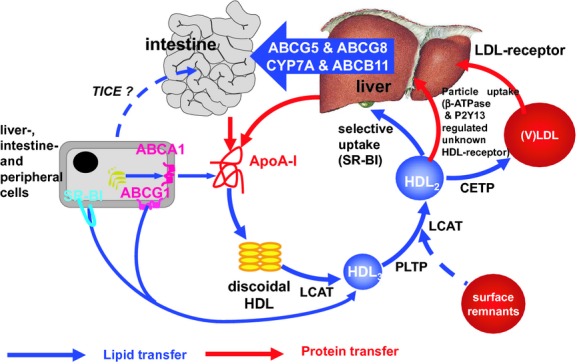Figure 1.

Key steps of RCT. HDL metabolism is a multistep process that involves the secretion of lipid-free apolipoproteins by the liver or intestine; acquisition of phospholipids and cholesterol from cells via ATP-binding cassette transporters (ABC) A1 and G1, as well as via scavenger receptor BI (SR-BI); maturation by LCAT-mediated cholesterol esterification and phospholipid transfer protein (PLTP)–mediated particle fusion; and final delivery of lipids to the liver, either directly via SR-BI or indirectly via cholesteryl ester transfer protein (CETP)–mediated transfer to LDL. Moreover, at least one as yet unidentified receptor stimulated by activation of the ektoATPase/P2Y13-axis mediates holoparticle uptake of HDL. The liver secretes cholesterol into the bile, either directly via ATP cassette transporters G5 and G8 or indirectly after oxidation to bile acid secretion via ATP cassette transporter B11. In addition to this classic hepatobiliary RCT mediated by HDL, there is increasing evidence for direct and HDL-independent transintestinal cholesterol excretion (TICE).
